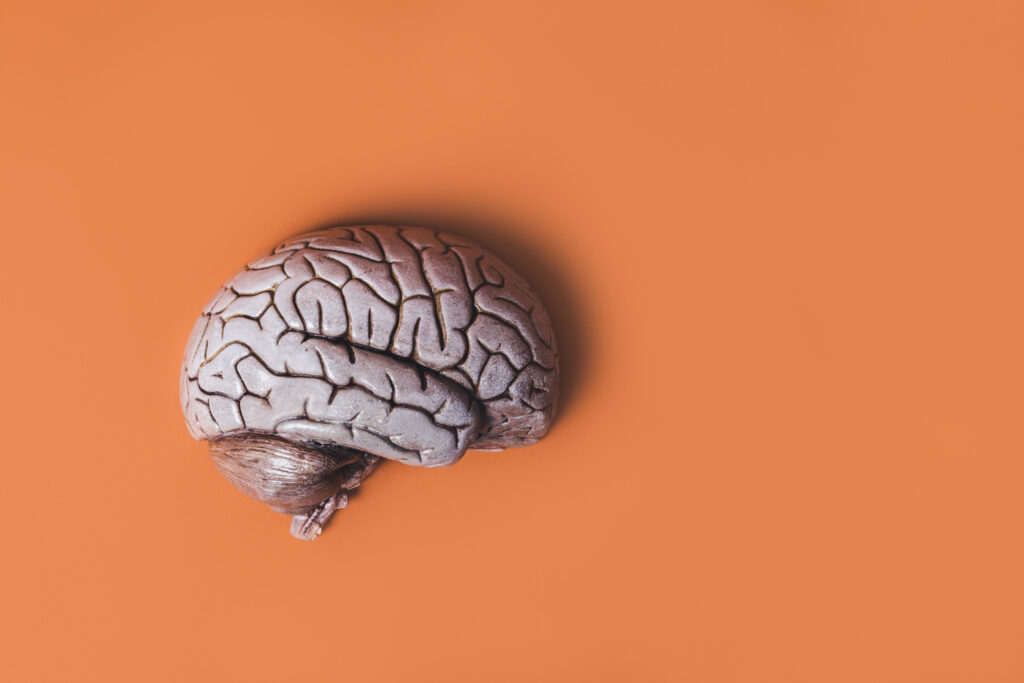What drives people to gamble? And what are the factors that typically affect a person’s negative gambling behavior?

Key takeways
- Gambling is not considered unhealthy when done in moderation, but unhealthy behavior can be triggered by negative emotions, stress, and social isolation
- Variations of dopamine responses in individuals affect gambling behavior
- Low income earners tend to gamble the most, but problem gamblers tend to increase spends with each gambling session
- Mental health and substance abuse are commonly related to pathological gambling
People gamble for a variety of reasons, the adrenaline rush, as a potential means of winning money, as a way of socialization and as a means of coping or escaping a stressful lifestyle, environment or mindset (Walker et al., 2008). It is difficult to find non-opinionated and neutral sources for information on this topic, medical literature state that, like many behaviors and habits, gambling cannot be stated as a healthy behavior, but in moderation, it is also not an unhealthy or detrimental behavior (Korn et al., 2003).
Akin to sex, drinking and food, gambling only becomes detrimental when it affects other aspects of a person’s life in a negative way or becomes, compulsive, inducing stress or psychological burden. From a public policy and societal well-being perspective, gambling has a widely negative effect and has been coined by some as ‘a tax on the poor’ with those in the lowest income bracket that spend the most on gambling (Borg et al., 1991).
The growth in the culture of gambling
Gambling opportunities are no only expanding rapidly in the US but worldwide, with trends in ‘gamification’ blurring the lines between games and traditional gambling (Derevensky & Gupta, 2007). This is leading to gambling becoming increasingly normalized, with the continuing growth of advertising and development of new platforms such as fantasy football, with the regulatory frameworks to control gambling are woefully inadequate (Castrén, et al., 2018).
There is also a unique situation where the government in some countries is the largest provider of gambling products to the public (in terms of total revenue) in the form of national and state lotteries than any private gambling company. This government’s role in the provision of gambling services is distorting the lines and regulatory independence from industry lobbyists has in no small way led to the current gambling culture and normalization seen today in modern society (Loer, K., 2018).
At the same time, it is well established in government reports that, with increasing frequency, individuals, families, and communities are affected by gambling‐related harms, especially those families on a lower income. In order to fully understand the causes, consequences, and public-health risk factors generated by gambling in society, it is necessary to break down expenditure by individuals in different age groups, from different socio‐economic backgrounds, and particularly by individuals with gambling problems to identify patterns in behavior.
Social determinates of gambling
There are a number of triggers, which have been deified in the social sciences that lead someone to initially start gambling, in what is seen as an unhealthy manner, not just for fun, but as an aid to deal with other problems and stresses in their day to day life (Morasco et al., 2007). The most frequently cited behaviors that are associated with gambling are as follows;
- Stress
- Social Isolation
- Depression
- Financial concerns
There are also other social determinants, which are positive reasons why on an individual level people engage in gambling, most commonly cited reasons include;
- Socialization
- Stress-relief/ Decompression
- Excitement and Enjoyment

Healthy gambling entails informed choice, including an awareness of the probability of winning, a low-risk pleasurable experience (i.e. legal, safe, regulated), and wagering sensible amounts. Healthy gambling sustains or enhances a gambler’s state of well-being and can be seen as positive social behavior in some or even the majority of cases.
Conversely, unhealthy gambling refers to various levels of gambling problems, which affect both psychological physical, and societal health. The overlapping and complex interrelationships between what form negative and positive behavioral factors of gambling is one of the reasons why regulation and gambling addiction is so hard to control, identify and prevent. The subjective nature of many academic research papers means that to one individual who is gambling to escape stress, another may be doing it for stress relief, and determining if these are positive and negative behaviors is possible using a robust scientific method.
The pathology of gambling
Pathological gambling is an emerging psychiatric disorder that has recently gained much attention because of its increasing prevalence and personal, familial, and social consequences. Although its pathophysiology within the brain is largely unknown, the shared similarities with both addiction and obsessive-compulsive spectrum disorders which hijack the brain’s pleasure-reward mechanism and dependency mechanism, and appears to have similar neurochemical pathways as alcohol, sugar, and illegal drugs. As with many other psychiatric disorders, it is believed that pathological gambling may result from the interplay between individual vulnerability or social isolation and environmental factors, which vary from individual to individual (Conversano et al., 2012).
A compulsive gambler is someone who is unable to resist their impulses, in a similar way as addiction develops, which can lead to severe consequences. The urge to gamble becomes so great that tension can only be relieved by gambling more and more, and sufferers are often unaware, or in denial, of having a problem.
This reward-addiction cycle is well established, however, the risk factors and social and psychological aspects which lead someone to choose to start gambling or that cause someone to start gambling in an unhealthy way, are less well understood and studied. The point where a persistent and recurrent gambling habit becomes a problematic gambling behavior is unknown, however clinically significant signs that a person is developing an unhealthy association or gambling behavior have been mapped out in a number of publications, which highlight the following characteristics;
- The individual needs to gamble with increasing amounts of money to achieve the desired excitement.
- Is restless or irritable when attempting to cut down or stop gambling.
- Has made repeated unsuccessful efforts to control, cut back, or stop gambling.
- Is often preoccupied with gambling (for example, having persistent thoughts of reliving past gambling experiences, handicapping or planning the next venture, thinking of ways to get money with which to gamble).
- Often gambles when feeling distressed (for example, helpless, guilty, anxious, depressed).
- After losing money gambling, often returns another day to get even (“chasing” one’s losses).
- Lies to conceal the extent of involvement with gambling.
- Has jeopardized or lost a significant relationship, job, or educational or career opportunity because of gambling.
- Relies on others to provide money to relieve desperate financial situations caused by gambling.
People with pathological gambling behavior sometimes have problems with alcohol and other substances, depression, and anxiety, and these factors are often used to help identify people at risk of gambling addiction. There is a consensus that those individuals suffering from this behavior should avoid any and all forms of gambling as they are placed in the very highest risk group for developing an unhealthy addiction to gambling.
People with pathological gambling behavior tend to have personal, financial, and legal problems, including bankruptcy, divorce, job loss, and prison time. The stress of gambling can also lead to heart attacks in people at risk for them. The onset of gambling disorder can occur during adolescence or young adulthood, but in other individuals, it manifests during middle or even older adulthood.
Generally, gambling disorder develops over the course of years, although the progression appears to be more rapid in females than in males. Most individuals who develop a gambling disorder evidence a pattern of gambling that gradually increases in both frequency, amount of gambling, and often have other associated risk factors before they first engage in gambling. From a public health perspective, this is useful in being able to identify a defined at risk-population to help avoid engaging with gambling without first fully understanding the risk they have of an unhealthy relationship developing.
Demographics & socioeconomic status
Among the socio‐demographic factors reported to correlate with problem gambling, the most common are; being of the male gender, having a lower education, being of younger age, being single or divorced, being unemployed or laid off from work, sick leave, retirement on pension for health reasons and living on a lower income.
Key studies conducted in Europe show male gender is associated significantly more with both weekly gambling expenditure and monthly gambling expenditure related to net income. People with lower incomes contribute proportionally more of their income to gambling compared with middle‐ and high‐income groups. Men with lower educational level, blue‐collar status and unemployment are associated with a higher level of gambling frequency and expenditure.
Conversely, being married or cohabiting seems to have a protective effect against high gambling expenditure. However higher net incomes have been found to increase gambling expenditure but has a weaker correlation to unhealthy gambling behaviors and or addiction (Castrén, et al., 2018).
Indigenous and some ethnic minority groups also have been reported to have high incidence and prevalence rates of unhealthy gambling behaviors. Additional risk factors identified in a number of studies include living in high-deprivation neighborhoods, membership of particular religious groups, lack of formal education, and unemployed status.
Many of these high-risk groups live disproportionately in neighborhoods that, in addition to being deprived, contain high concentrations of gambling venues and outlets, either a result of or in response to the number of persons engaged in gambling. The number of men and women who start to gamble and who quickly develop unhealthy addictive behaviors strongly correlates to those with current and previous issues of mental health and substance abuse (Van der Maas, 2016).
Gambling and the biochemistry of the brain
Dopamine, a so-called neurotransmitter that helps nerve cells to communicate, is also known to be an important chemical in the brain’s reward system. Research studies into gambling’s effect on the brain indicate that it activates the brain’s reward system similarly, to how drugs do: by releasing a higher amount of dopamine (Shizgal and Arvanitogiannis, 2003).
One study also found that problem gamblers showed significantly higher levels of excitement when dopamine was released in their brains compared to healthy people. Dopamine release seems to reinforce problem gambling through increasing excitement levels, reducing inhibition of risky decisions, or a combination of both. This is why people are initially attracted to gambling: it is a highly rewarding experience requiring very little effort and few barriers to participating.

From neuroimaging studies, it is clear that there are several brain regions associated with gambling that can be identified. Studies have shown that important regions associated with risky decision-making include the ventromedial prefrontal cortex (involved in decision-making, memory and emotion regulation); orbital frontal cortex (which helps the body respond to emotions); and insula (which regulates the autonomic nervous system).
Problem gamblers may therefore have increased activity in these areas and create a biological predisposition to problem gambling. When gamblers watch the results of their bet, they also show increased brain activation in the reward system of the brain, including the caudate nucleus. This may be particularly strong in people who are addicted to gambling (Acheson et al., 2009).
Conclusion
Gambling can be an enjoyable and sociable behavior for many in society, but for some there are biological and environmental factors that predispose them to develop unhealthy gambling addictions. Many of the predetermining factors can be identified before a behavior is initiated or ingrained and from a public health, perspective pre-intervention for individuals has the potential to yield a significant society and individual benefit. However, gambling is a complex psycho-social phenomenon and more research is needed into the triggers and risk factors in developing such unhealthy behaviors.
Referencing
Derevensky, J.L. and Gupta, R., 2007. Internet gambling amongst adolescents: A growing concern. International Journal of Mental Health and Addiction, 5(2), pp.93-101.
Walker, M., Schellink, T. and Anjoul, F., 2008. Explaining why people gamble. In In the pursuit of winning (pp. 11-31). Springer, Boston, MA.
Korn, D., Gibbins, R. and Azmier, J., 2003. Framing public policy towards a public health paradigm for gambling. Journal of gambling studies, 19(2), pp.235-256.
Borg, M.O., Mason, P.M. and Shapiro, S.I., 1991. The incidence of taxes on casino gambling: Exploiting the tired and poor. American Journal of Economics and Sociology, 50(3), pp.323-333.
Loer, K., 2018. Gambling and doing good? On the relationship between gambling regulations and welfare services in Germany. In Gambling Policies in European Welfare States (pp. 101-118). Palgrave Macmillan, Cham.
Castrén, S., Kontto, J., Alho, H. and Salonen, A.H., 2018. The relationship between gambling expenditure, socio‐demographics, health‐related correlates and gambling behaviour—a cross‐sectional population‐based survey in Finland. Addiction, 113(1), pp.91-106.
Morasco, B.J., Weinstock, J., Ledgerwood, D.M. and Petry, N.M., 2007. Psychological factors that promote and inhibit pathological gambling. Cognitive and behavioral practice, 14(2), pp.208-217.
Acheson, A., Robinson, J.L., Glahn, D.C., Lovallo, W.R. and Fox, P.T., 2009. Differential activation of the anterior cingulate cortex and caudate nucleus during a gambling simulation in persons with a family history of alcoholism: studies from the Oklahoma Family Health Patterns Project. Drug and Alcohol Dependence, 100(1-2), pp.17-23.
Conversano, C., Marazziti, D., Carmassi, C., Baldini, S., Barnabei, G. and Dell’Osso, L., 2012. Pathological gambling: a systematic review of biochemical, neuroimaging, and neuropsychological findings. Harvard review of psychiatry, 20(3), pp.130-148.
Van der Maas, M., 2016. Problem gambling, anxiety and poverty: an examination of the relationship between poor mental health and gambling problems across socio-economic status. International Gambling Studies, 16(2), pp.281-295.
Shizgal, P. and Arvanitogiannis, A., 2003. Gambling on dopamine. Science, 299(5614), pp.1856-1858.

